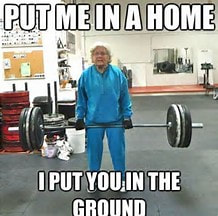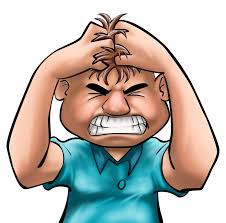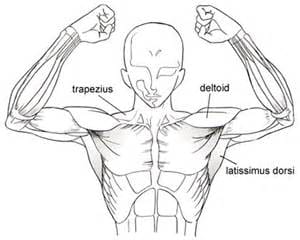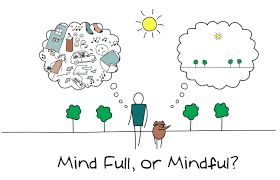|
Here is the kind of text message I get from Kevin sometimes. He is in his 60's, and 5 or 6 years ago he was living a more or less sedentary lifestyle. "back is aok! I did 50 overhead squats and 45 power cleans that last week would have made my back angry. I did 45 hand stand pushups and 45 burped box jump overs also but now I’m bragging. And back this morning for a 9:00 class!!!!! HA! Thanks for your help Rocky." Now, you can read a bit about him at https://crossfitkitchener.com/testimonials/ He is about the 6th person as you scroll down. Since then he has moved from Kitchener to Alberta and is constantly pushing himself to be better. Competing against not only himself (his past scores) but others in his age group across North America, as well as everybody else in the crossfit community. I am part of his fitness routine, as is a Paleo diet, and those daily visits to the Crossfit studio. He is in great shape, and rather than ageing, his body thrives on the extreme effort, and he is getting younger. Kevins approach to his own body-mind has me thinking about just how different and unique we all are, and how any one system or concept or approach does not work for everyone. In my last posting I talked about Heinz, and is inspirational approach to peak fitness, which is perhaps more in line with my own ideas. But people like Kevin are challenging my ideas. Stretching me to expand my horizons and take in more possibilities. which at this stage in my life can only be great! I would like to talk about some other inspirational clients in future posts, to explore further our differences, and also similarities in the best ways we can approach our bodies, which we are blessed to have for these few short years of earthly life. It can be very valuable for young and old alike to discover the type of movement that their body type, metabolism, and specific circumstances calls for to function at our best on every level.
2 Comments
You have tried your best, paid your dues, done your homework. Followed through.
Still the symptoms persist. Diet, exercise, supplements, x-rays, etc. Nothing seems to help much. Or everything helps for a while, and then not. You get despondent, depressed, because there are no results to all your efforts. But wait! What is occurring right now may be the best result one could wish for. The impasse you have reached is an invitation to not only look deeper and wider, but to release your grip on what you want, and relax into WHAT IS. In Bodywork, the cause of a 'problem', like say a pain in the neck, may easily not be in the neck. A tightness in the shoulder may be putting too much pressure on the neck. A tightly held jaw may be radiating into the neck. And that jaw tension could be an emotional holding, something you don't want to say for example. It could be in the neck, because someone at work is such a 'pain in the neck'. The shoulder thing could be from the experience of carrying the weight of the world on your shoulders. Layers of radiating and referred pain. Pain seems to be in one place, but its real source is elsewhere. Trying to release the hurting spot, may only irritate that already weak spot. Using detective skills, the place, or system which is causing the problem is tracked down, and addressed. Holistic healing potential. And probably the vein of 'injury' runs much deeper. It connects to things that happened in our childhood, and ancestral patterns that go back generations which we may or may not be aware of at all. Structural and functional patterns of use and abuse layer upon layer build on top of each other until without really seeing where it is from, we carry chronic discomfort and pain filled programmes within the body mind. All this is not bad news. It points to even deeper levels of healing that a 'pain in the butt' is trying to draw your attention to. For how else can your body get your attention and communicate with you than to create pain. It is a code for change. It is something to listen closely to, and happily respond to. I can't believe that I forgot to mention Stress anywhere. Perhaps because its everywere, and so much of the work we do in a session is de-stressing. If you google images for 'stress', people are shown clutching an area that holds a big amount of the bodies tension. It is estimated that up to 70% of all tension lives in the crevises of the face. The eyes are straining, the jaws store huge bits of tension party due in part to the shape of the maseter muscle, which in order to chew needs to be very strong without taking up too much space. Because of that density, and the responsibility the jaw has, it is also a logical place to hold major tension.
The scalp is so stressed, the typical image of someone pulling their hair out is a clue to all that can be held in the fascia of the scalp. The nose not only smells, it contains nasal passages that can get very clogged, broadcasting and accumulating tension. The list goes on. All this to explain why I like to take ten minutes every session to open the face. Working specific muscles, different fascial levels and layers, not to mention cartilage and bone. Ten minutes well spent, within a session that spends a bulk of time working on different interconnected parts in a logical sequence. As one area starts to release, the rest of the body is reminded of what healing is. Re-turning to a state of relaxation the body naturally knows but it gets distracted or forced to some other programme. The body is only too happy to get back to natural function when it is possible. The body is always in some kind of balance. But some balances are more relaxed and open that others. SOmetimes, it is not 10 minutes for the face and head, but the whole session. Layers of habitual stress can be stirpped away. Will they return? Thats up to you. Stress of course is a part of our lives, no avoiding that. But we can change our habitual behavior in order to accumulate and store less stress. If stress comes and then we return to relaxation, we have a fuller spectrum of possibility, and a richer life. Its well worth the effort, so that we can relax.  Burnout is a common outcome amongst massage therapists of all sorts. We try to do too many sessions per day to make enough money. Pushing sometimes beyond our threshold is a good thing, but to do it all the time is crazy. Finally the body says no-in one form or another, always getting a bit more emphatic in its messages. If we still don't respond, the consequences can be dire. I will be posting tips to avoid burnout from time to time for therapists, and this is one. Practice what you preach. While you're preaching it. When you ask a client to 'relax', 'breathe', 'open' or whatever you say to clients, listen to what you re saying and do it yourself in the moment. Then you are communicating with your client through your own body language, and at the same time establishing an inner communication loop of opening and relaxing your own body while you are working. and since that can be quite a few hours a day, you have the ongoing opportunity to be with you, work with you, heal you. It is a wonderful bonus of our careers. I believe that 'Healing Happens'. Which means that the body knows how to heal itself. As does everything else.
Healing is natural to this existence. When there is dis-ease, something has happened to dis-connect us, to send us in a different direction from wholeness. At our best we are one, and at our worst we have separated into warring factions. Healing makes whole once more. It is possible to imagine how one could be lacking in communication skills with ones spouse or child. Problems would arise. Friction would become normal, Separation would grow, despite a wish on our part, on everyones part to come together . A third party, a councillor, pastor, therapist, friend could intervene and help the estranged parties to open lines of communication. Healing would ensue, and in fact, a deeper bond, a higher love, a more solid connection can evolve out of the ashes of the problem. Difficulty is an aspect of growth, an evolutionary agent. Both difficulty and healing are ongoing states. Neither is meant to be static. The body is a living organism made up of many many parts. It cn also have breakdowns in communication that have to be healed. Rebalancing, through work on the fascial system, which is everywhere and which communicates between its parts, is what we work with to create the opportunity for healing to happen. Fascia connects, so when we work with it, we are also influencing everything else from organs that are encased in fascia, to muscle that can slide thanks to fascia, to bone and further. It is because of the connectivity of fascia that it is such a pivotal healing agent. In order to appreciate Healing, it may be valuable to say a few words about Trauma. Trauma is a loss of connection. Our response to that is to try to 'manage' life. The typical way we do that is to tighten, close, avoid and generally shrink our vital energy. Because there is a limit to how much we can manage, the less we have to deal with the more it appears that we are in control. Really, this only leads to more loss of connection. We operate under a perceived threat that we will be overwhelmed. The symptoms we register include hyper-arousal :ever ready for flight or figh). Constriction :narrowing, tightening, numbness, shutting down. Dissasociation and denial: this strategy softens the pain, and is a way to deal with the horror, but at great cost. Chronic pain can sometimes signal a disassociated part. Helplessness, freezing: the opposite of hyperarousal, the body tends towards collapse. We can view all of these symptoms as messages, and respond in a way that allows Healing to Happen. With compassion (both to self or the other) we accept the situation, and allow the 'Isness' of it, the factuality of it. Trauma needs time and love and touch and then it can heal, and that process can have deep and profound and life changing results. Trauma is not an easy teacher, but just because of that, it is a truly impactful catalyst for growth, and transformation. Was reminded the other day during an interesting session how the armpit area is a potential repository for held emotions. A shock is held in the body, some information is left unprocessed, or something as innocent (or possibly as malicious) as being tickled leaves a lasting mark. Because the armpit, like the groin area is not only tender, it is quite large and well hidden, it can accumulate layers of holding one on top of the other. Like growth rings on a tree, one hurt can be added on after a year, or maybe ten years and an area of contraction and holding results. Tension naturally goes to somewhere that is already tense, and thus is also less conscious, so it can land there and take root.
In this session, a quite body aware person was able to breathe into the armpit we were working on, become more present and drop deeper into the experience. He immediately remembered something that happened more than 20 years prior that had made him feel very uncomfortable. As that memory surfaced in the session, we simply hung out and gave it the space and time to move through. In this case, it was only a matter of a couple of minutes, but something that had been held for quite a long time was released. There may be many more layers there, but the process of letting go had begun, and it is a rewarding work which left the client feeling lighter and standing taller. When love plus awareness went clinical in psychoterapy in the seventies, it produced 'mindfulness ' which is now mainstream therapy, with its most recent refinement being 'self-compassion'. These concepts are most vividly laid out in Buddhism, and more specifically, Meditation. It is from there that a few therapists were not only able to apply but to measure their successes. It works with all kinds of emotional states, with addictions, and all kinds of stress and anxiety.
Joh Kabat-Zinn, is usually recognized with bringing legitimacy and clinical relevance to mindfulness. He started Mindfulness-Based Stress Reduction (MBSR). He distanced this work from any religious doctrine and placed it solidly into a therapeutic context, where it has thrived. Because it works. At the same time as Kabat-Zinn and others were sitting in Zen in the seventies, we were also exploring similar avenues of combining western techniques with eastern foundations. Rebalancing is but one of the therapies that grows still from those roots. And it is only in the last few years, that scientific, clinical legitimacy is being brought into our work. Esalen style massage was the first thing I learned in 1975. It was not a system that stirred up a lot of emotional stuff. Then, very soon after, I learned Rolfing, a very deep style of work, which can be painful, and back in those days was for sure painful . People going through the series of sessions would proudly compare black and blue bruises which demonstrated the potency of their sessions. This type of work did produce emotional content often. But because there was a certain amount of work that had to be done in each session, the actual table part of which was only 45 minutes, emotions were ignored. If one wanted to explore that, go elsewhere and do some Primal work, or Rebirthing, Gesstalt, Encounter, or one of any number of other emotion based therapies becoming so popular back in the seventies.
When Rebalancing was being birthed by us, we were drawn to bring the emotional component in. Exploring the material that the deep work brought to the surface was just to enticing. Plus there were so many talented therapists around who could show us how to work with anger, shame, shock, abandonment, resentment etc. This work appeared to be very juicy, plus once the door was open, people could enter emotional drama very quickly, there was a lot going on and it seemed to be leading somewhere very good. Time passed, more was learned about how the mind builds pathways that in the very process of wanting to remove negative influence mostly re-inforces it.Think of vehicles on a dirt road creating deeper and deeper ruts. Also how the body embeds layers of trauma, one on top of the other, building a physical wall of tension and holding which does not give way to direct attack. The more pointed the approach to breaking down the defence, the threatened structure responds by tightening and becoming ever-more defensive. So it is that in we now tend to work with the emotional body in a more indirect way. allowing material to surface as it wants to and giving it space to integrate and change. Without pushing and aiming for any particular result, we honour the wisdom of the body/mind to, given the chance, heal itself. We stick with the physical opening, working in a slow, non push fashion, and if emotional material moves, we give it the space. Much like a mother holding her child who has just had a fall and scraped its knee, we are present and understanding without making a bid deal out of it. In this way, without pressure, charged emotions can give way to feelings to be integrated. |
AuthorWrite something about yourself. No need to be fancy, just an overview. Archives
July 2017
Categories |




 RSS Feed
RSS Feed
